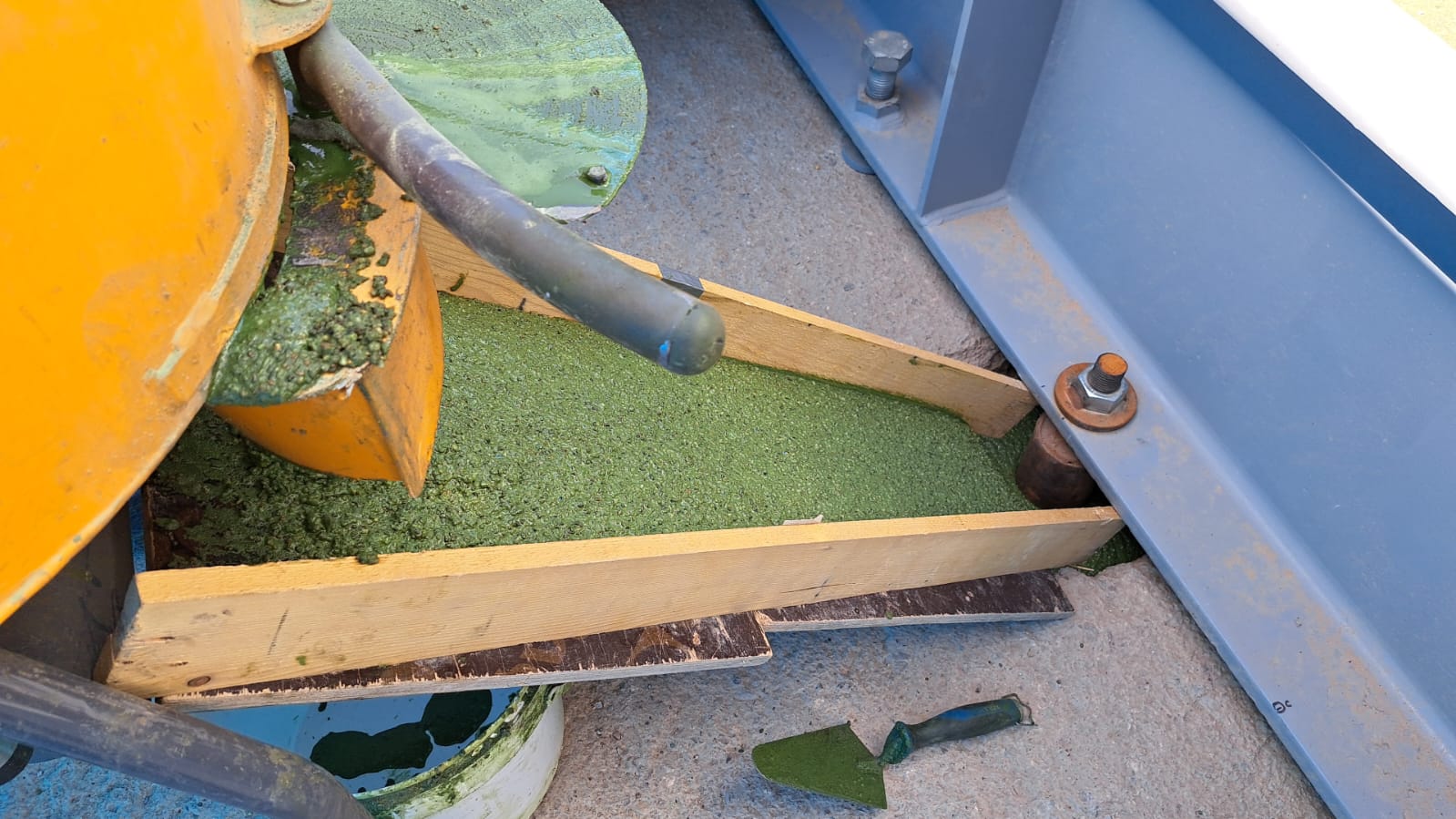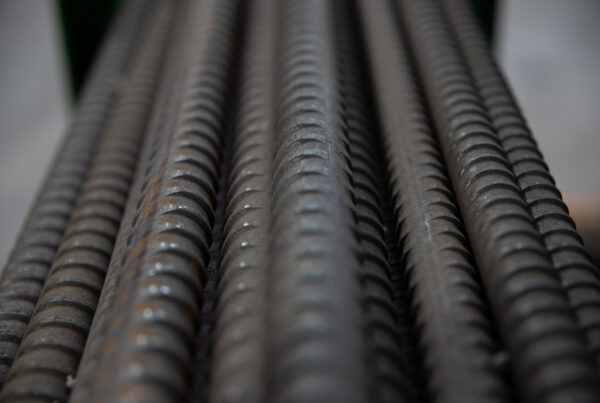In construction and engineering projects, reliable and robust fastening solutions are crucial for ensuring structural integrity and safety. Among the various options available, anchor bolts stand out as versatile, high-strength fasteners that provide exceptional stability and support.
The performance and understanding of anchor bolts and bolted joints are often underestimated. In reality, anchor bolts act as springs, utilising elasticity to provide stability and hold machine frames firmly to foundations.
In this comprehensive guide, we will explore the function, sizing, tension, materials, and installation of anchor bolts. By understanding these key aspects, you can ensure proper selection, installation, and long-term performance of anchor bolts, maximising their effectiveness in securing structures.
Understanding Anchor Bolts – Their Function
Anchor bolts play a critical role in the construction industry by securely fastening machine frames to foundations. Their primary objective is to establish a strong and stable connection, ensuring the machine remains firmly in place. By placing anchor bolts under sufficient tension, they can withstand the combined horizontal forces that act upon the machine. These bolts are responsible for maintaining the necessary clamping force that holds the machine against these forces.
Anchor bolts play a vital role in effectively transferring loads from the machine frame to the foundation. This transfer of loads ensures the structural integrity and longevity of the machine throughout its operational lifespan. By bearing the weight and distributing the forces evenly, anchor bolts prevent excessive movement or displacement of the machine, minimising the risk of damage or instability.
With their crucial function in providing stability and load transfer, anchor bolts are a fundamental component in the construction of structures. Properly installed and tensioned anchor bolts are essential for ensuring the safety, performance, and longevity of machines and structures in various industries.
Anchor Bolt Sizing
Proper sizing of anchor bolts is crucial to ensure the structural integrity and stability of the machine or structure being fastened. Several factors come into play when determining the number, diameter, and length of anchor bolts.
One significant consideration is the shaking forces that the anchor bolts will need to resist. These forces can vary based on the specific application and environmental conditions. Additionally, the strength of the materials involved, such as the anchor bolts themselves and the foundation, must be taken into account. Anchor bolts should be selected to withstand the anticipated loads and forces they will experience during operation.
Concrete cracking is another factor to consider when sizing anchor bolts. Excessive or improper loading of anchor bolts can cause concrete to crack, compromising the stability of the structure. By properly sizing the anchor bolts, the risk of concrete cracking can be minimised, ensuring long-term stability and durability.
Mounting chock and grout factors should also be considered during anchor bolt sizing. These factors can affect the distribution of loads and the overall performance of the anchor bolts. Proper sizing ensures that the anchor bolts can adequately transmit the loads from the machine or structure into the foundation, preventing premature failure or displacement.
Undersized anchor bolt installations should be avoided at all costs. Insufficiently sized anchor bolts can lead to structural instability, compromising the safety and performance of the machine or structure. It is crucial to carefully analyse all the factors involved in anchor bolt sizing to ensure a proper and robust connection that can withstand the intended loads and forces.
By taking into consideration shaking forces, material strength, concrete cracking, and mounting chock and grout factors, engineers and construction professionals can determine the appropriate number, diameter, and length of anchor bolts, guaranteeing a secure and reliable fastening solution that meets the specific requirements of the application.
Anchor Bolt Tension
Anchor bolts derive their holding force through elastic stretching, comparable to springs. It is important to understand that the torque applied to the nut is not the primary factor in achieving the desired tension. Rather, the torque serves as a mechanism to stretch the bolt, resulting in the desired elongation and subsequent tensioning of the anchor bolt.
The stretch of the bolt itself is what determines its effectiveness in maintaining a secure connection. When the bolt is stretched, it develops a tension force that counteracts the external forces acting on the structure. This tension force is crucial for anchoring the machine or structure firmly in place and ensuring its stability.
It is worth noting that the torque applied to the nut should be carefully controlled during the installation process. However, it is not the sole indicator of proper tensioning. Instead, it serves as a means to achieve the desired level of stretch in the bolt. Monitoring the elongation of the bolt is essential to ensure that the anchor bolt reaches the required tension and can effectively resist the forces it will encounter.
Understanding that anchor bolt tension is primarily determined by the elongation of the bolt allows for precise and effective tensioning, ultimately ensuring the anchor bolts can provide the necessary holding force to secure the machine or structure against external loads and maintain its stability over time.
Anchor Bolt Materials
When it comes to anchor bolt materials, certain considerations are vital for ensuring a strong and reliable connection. For new installations and repairs, it is recommended to use high-strength bolts that meet ASTM spec A-193 standards. These bolts should have a tensile yield of 105,000 psi, ensuring they can withstand significant loads and forces.
Similarly, nuts used in anchor bolt assemblies should meet ASTM spec A-194 standards. Choosing nuts that meet these specifications ensures their compatibility and performance with the selected bolts. Moreover, the use of Super Nuts can offer additional advantages such as enhanced durability and resistance to loosening.
To address any lack of perpendicularity between the bolt and frame, the inclusion of hardened steel spherical washers is recommended. These washers help compensate for any misalignment and provide a more secure and stable connection between the bolt and the frame.
In terms of thread construction, rolled bolt threads are generally preferred over cut threads. Rolled threads provide a smoother and stronger thread profile, resulting in improved load-bearing capacity and reduced susceptibility to thread stripping or failure.
By selecting appropriate materials and components for anchor bolts the structural integrity of the machine or structure can be maintained, providing confidence in its performance and resistance to external forces.
Anchor Bolt Installation
Proper installation of anchor bolts is crucial for their effectiveness and the overall stability of the machine or structure. There are several key considerations to keep in mind during the installation process.
Using longer bolts during installation offers various benefits. Firstly, it allows for maximum stretch of the bolt, which is essential for achieving the desired tension. Additionally, longer bolts help move terminations and tensile stresses away from the surface of the block. This has the advantage of enlarging the cone of compression, effectively putting a larger portion of the block into compression. Moreover, this technique helps mitigate the potential effects of chock and grout creep as well as thermal expansion.
To ensure the integrity of the anchor bolt installation, it is recommended to wrap or sleeve the bolts along their entire length. This practice helps prevent shear cracks from occurring between the bolt and the concrete, ensuring a secure and durable connection. It also provides the longest possible free stretch length for the anchor bolt, allowing it to effectively bear the intended loads and forces.
In addition, designing an open relief area around the top of the bolt is beneficial. This design feature enables small bending adjustments to accommodate the frame. By allowing for these adjustments, the anchor bolt can better conform to the specific requirements and geometry of the frame, enhancing the overall stability and performance of the connection.
Stress in Threaded Nuts
In threaded nuts, the highest concentration of stress occurs within the first three threads. This means that the threads closest to the nut’s face bear the majority of the load. It is crucial to recognize this stress distribution when designing and assembling anchor bolt connections.
While some may believe that using double nuts on anchor bolts can increase the joint’s strength, this is not the case. Doubling the nuts does not significantly enhance the strength of the connection. Therefore, it is advisable to avoid using double nuts and instead focus on proper tensioning and installation techniques to ensure the integrity and stability of the joint.
Preferred Anchor Bolt Terminations
To achieve optimal performance and load transfer, careful consideration should be given to anchor bolt terminations. Several preferred terminations can effectively support and transmit loads from the machine or structure to the anchor bolts. Options such as welded plates, embedded plates, or anchor rods offer reliable and robust connections.
- Welded plates involve welding a plate directly to the machine frame, providing a solid and secure termination point.
- Embedded plates are embedded within the concrete foundation, allowing for a direct load transfer between the anchor bolts and the foundation.
- Anchor rods, on the other hand, offer a versatile option by extending through the structure and providing a reliable connection point.
By selecting and implementing these preferred anchor bolt terminations, engineers can ensure the durability, stability, and performance of the anchor bolt connections.
Conclusion
Anchor bolts are essential components in maintaining the stability and safety of structures. By gaining knowledge about their function, sizing, tensioning, materials, and installation techniques, informed decisions can be made to optimise their effectiveness.
When it comes to anchor bolt replacement and installation, Alphatec Engineering stands out as experts in the field. Their expertise and experience ensure that anchor bolts are carefully selected, installed, and maintained, providing long-lasting and reliable support. By prioritising the proper selection and installation of anchor bolts, the safety and structural integrity of machines and structures can be significantly enhanced. Trust Alphatec Engineering for all your anchor bolt needs.





